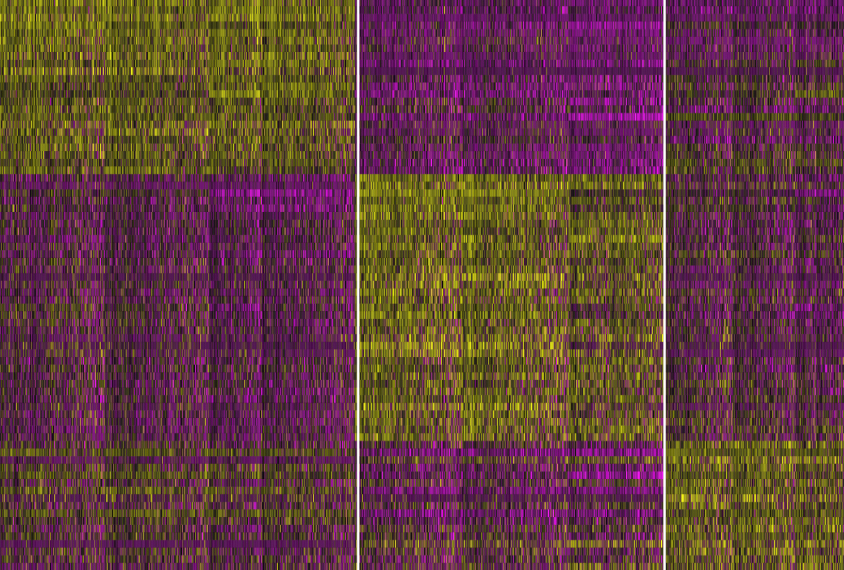
THIS ARTICLE IS MORE THAN FIVE YEARS OLD
This article is more than five years old. Autism research — and science in general — is constantly evolving, so older articles may contain information or theories that have been reevaluated since their original publication date.
A new technique offers a fast, versatile way to measure gene expression in thousands of cells at once1.
Scientists can use the technique, called Seq-Well, to sequence messenger RNA (mRNA) — the genetic intermediate between DNA and protein — in each cell. The set of mRNAs in a given cell provide clues to the cell’s function.
Seq-Well is similar to a technique called Drop-seq, which allows researchers to sequence RNA by separating cells into water droplets. Inside each droplet is a plastic bead coated in small strands of DNA. The strands bind to mRNAs within the cell and act as barcodes that identify the cell. Researchers then sequence the mRNAs and pinpoint the cell they came from.
Seq-Well, described 13 February in Nature Methods, does not require the large equipment Drop-seq uses to separate cells into droplets. It instead relies on a piece of etched polymer that resembles a microscope slide, along with barcoded beads and basic lab tools. This makes the method portable and practical for labs with limited resources.
The piece of polymer contains 86,000 microscopic compartments, or ‘wells,’ each of them big enough to hold a single cell. Researchers first add a barcoded bead to each well. They then coat the surface of the polymer with a solution of cells, which fall, one by one, into the wells.
The researchers add chemicals that break the cell membranes and release the cells’ mRNA, which they then extract for sequencing. The process costs about 5 cents per cell. This is comparable to the cost of Drop-seq but far less than that of traditional methods, which run about $10 per cell.
The researchers showed they could use Seq-Well in a biosafety level 3 laboratory, in which safety constraints make experiments challenging to conduct. In that environment, the approach revealed gene expression patterns for thousands of human immune cells called macrophages after the cells had been exposed to the bacterium that causes tuberculosis.
By joining the discussion, you agree to our privacy policy.